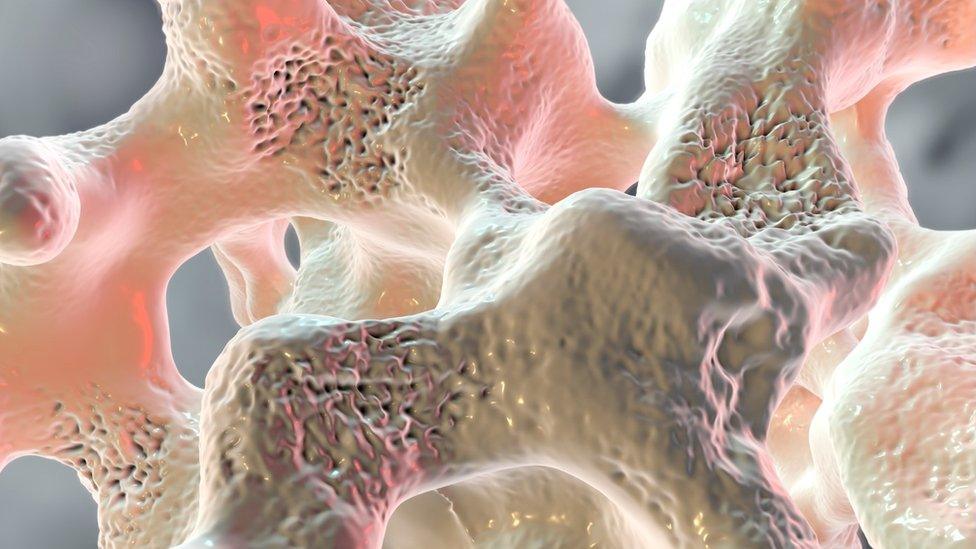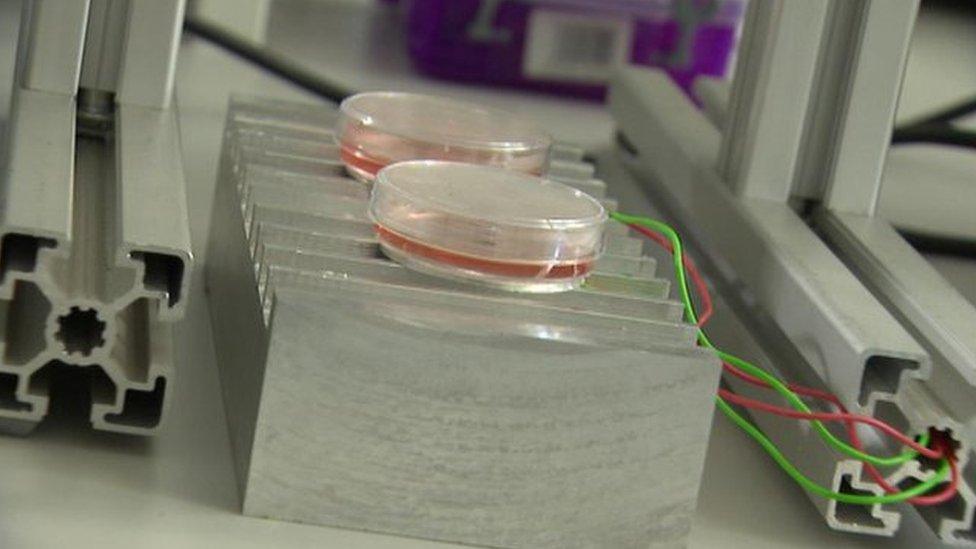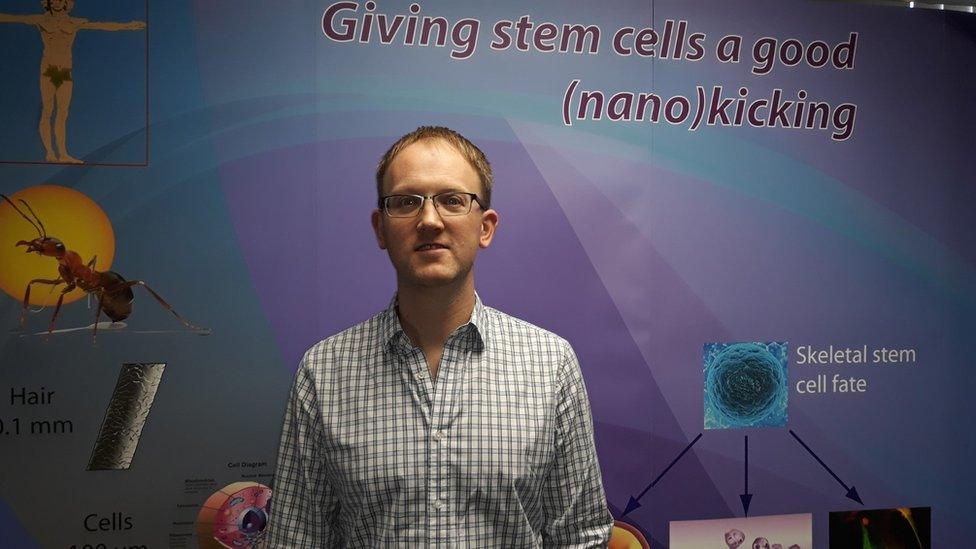'Shaking a leg' to reverse osteoporosis
- Published

Osteoporosis develops in paralysed limbs, leading to bone loss and fractures
Researchers at Strathclyde University are to test a radical new way of fighting the bone disease osteoporosis.
Volunteers will have their paralysed limbs shaken by tiny amounts in an attempt to reverse lost bone.
The "nanokicking" technique could have implications far beyond the treatment of spinal injuries.
The study, which the UK Science Minister Chris Skidmore said showed "enormous promise", has its roots in the search for gravitational waves.
Nano vibrations
If you've ever broken a bone you'll know it's unpleasant to say the very least. But did you know what was going on as it healed?
It all centres on your stem cells, part of your body's repair mechanism.
At the site of a break adult stem cells are given a signal to start creating new bone. That signal takes the form of vibrations at tiny and highly precise distances and frequencies.
An interdisciplinary team of researchers succeeded in doing the same in a Scottish laboratory, taking human stem cells and vibrating them precisely on a nanoscale - measurements based on billionths of metres.
Hence the nano in "nanokicking".

The team previously succeeded in turning stem cells into pieces of bone in the laboratory in 2013
The idea was to turn the stem cells into pieces of bone suitable for grafting back into the donor. As the cells had come from the same patient there would be no chance of them being rejected.
In 2013, BBC Scotland reported the technique had succeeded in the laboratory.
There were also hopes that it might one day be applied directly to patients' bodies. That day is now close.
A team led by Prof Stuart Reid has won £350,000 funding from the UK's Science and Technology Facilities Council (STFC) to spend two years applying nanoscale vibrations to patients with spinal injuries.
Fifteen volunteers being treated at the National Spinal Injuries Unit at Glasgow's Queen Elizabeth University Hospital will have their paralysed limbs precisely vibrated in an attempt to halt and reverse their osteoporosis.
When a limb is paralysed the lack of everyday stresses and strains use leads to "disuse osteoporosis" in which the bone weakens and becomes more likely to fracture.

Prof Stuart Reid's team now has funding to apply nanoscale vibrations to patients with spinal injuries
A successful trial would raise hopes more widely. An estimated three million people in the UK have osteoporosis, leading to about 500,000 broken bones each year.
Processes already exist to persuade stem cells to become bone but these are expensive and complex.
"Nanokicking" holds out the prospect of a simpler solution which could prevent bone loss as well as cure it.
The technique could also have uses in space.
Astronauts on the International Space Station lose bone density because of low gravity in orbit.
So the UK Space Agency is being kept informed of developments alongside the National Osteoporosis Society.
Scaling up
Prof Reid first specialised in making achingly precise measurements needed to reveal them as part of the search for gravitational waves. The same precision which now regulates the distance and frequency of vibrating stem cells.
He is still a member of the LIGO scientific collaboration, the huge international effort which proved Einstein's century-old prediction that gravitational waves would be found.
Now leading an interdisciplinary team which straddles biomedical engineering and spacetime, he says positive results from the trial would lead to the project being scaled up to benefit more than people with spinal injuries.
Prof Matt Dalby, the co-inventor of the 'nanokicking' technology, was involved in the original stem cell research and is part of the investigator team on this latest project, along with Dr John Riddell, who leads on the biological investigation of this project, both from the University of Glasgow.
Back in 2013 he told BBC Scotland of his hope that patients, not just cells in petri dishes, might one day be vibrated to grow themselves new bone.
But he warned that "some horrible maths" would be involved. They could be close to solving the problem.